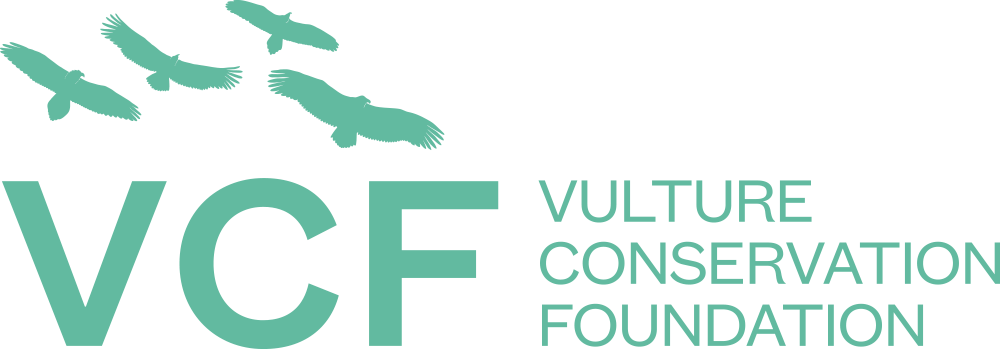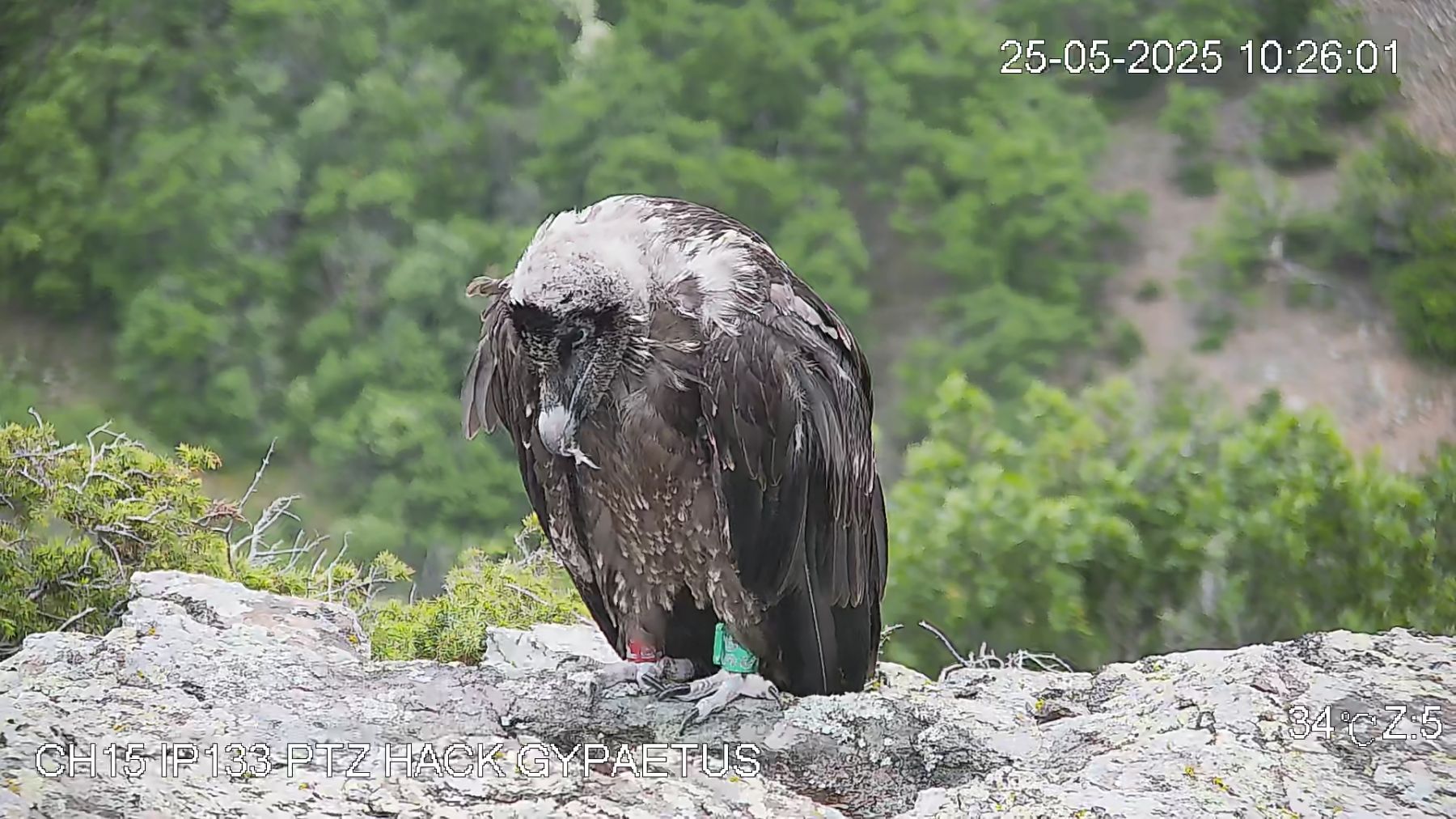(Download here the french version) Bearded Vulture Eglazine is one of the most adventurous solo travellers ever seen. Hatched in captivity and released in 2020 in the French Massiv Central, Eglazine became famous for spending her summers wandering between the Netherlands and northern Germany. Unfortunately, we received worrisome data from Eglazine’s GPS tag in May 2023. Despite several on-site searches (in Normandy, France), we were not able to find her or the tag. Her fate remains unknown. We hope Eglazine is fine and has only escaped our monitoring network. We are urgently searching for potential observations of her.

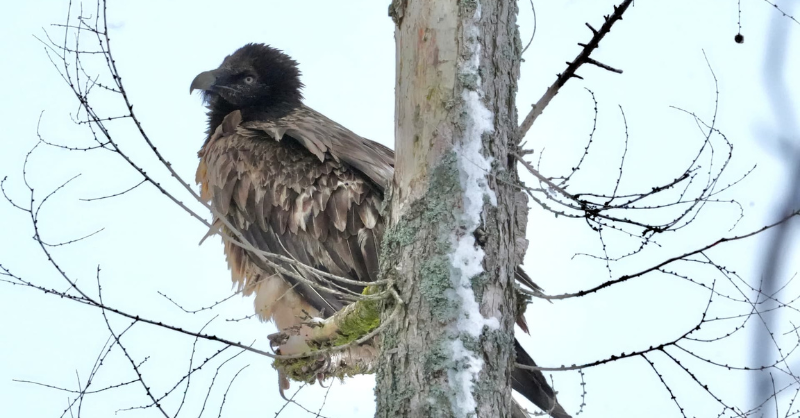
We need your help to find Eglazine
We call on all vulture lovers, photographers and observers who have recently encountered a Bearded Vulture similar to Eglazine to please share that information with us.
We are especially looking for photos of recent observations in France, Belgium, the Netherlands or Germany (territories that she vastly explored in the last two years). Below is the last photo from Eglazine, taken in March 2023. In the meantime, Eglazine has certainly changed some feathers, but we can identify her in a photograph.
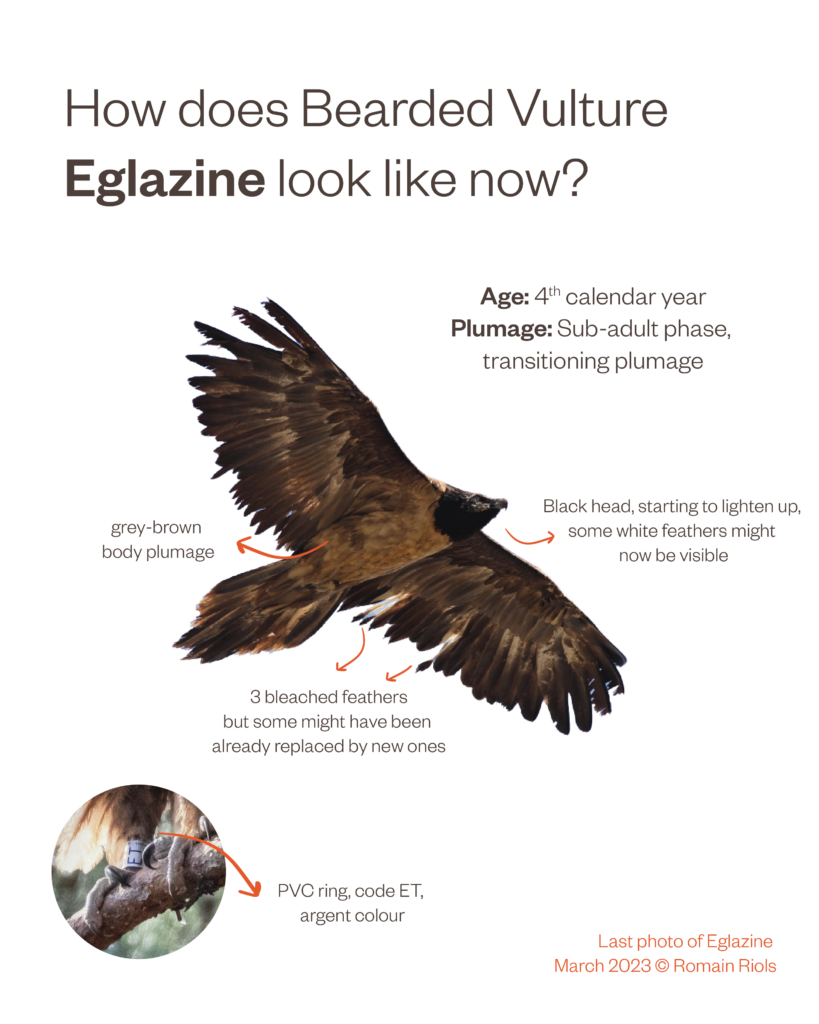
Main characteristics
- Age: 4th calendar year
- PVC rings: code ET, colour argent
- Plumage characteristics: Eglazine has already entered her sub-adult phase and is displaying transition plumage. Her head is still black, but it is beginning to lighten up, and some white feathers may have appeared. The body plumage is grey-brown. Eglazine still had three bleached feathers in March this year; however, some might have already been replaced.
Please send your observations and photos to: eglazine@4vultures.org.
About Eglazine
Eglazine hatched in Parco Natura Viva in March 2020 within the Bearded Vulture Captive Breeding Network, coordinated by the Vulture Conservation Foundation (VCF) on behalf of EAZA’s EEP. Around three months after hatching, the LIFE GypConnect project (2015-2022) received the female vulture. The LPO team at the Grands Causses’ technical site fitted her with identification rings and a GPS transmitter for monitoring purposes. They proceeded to release Eglazine in the Grands Causses using the hacking method, placing her into an artificial nest at a suitable habitat.
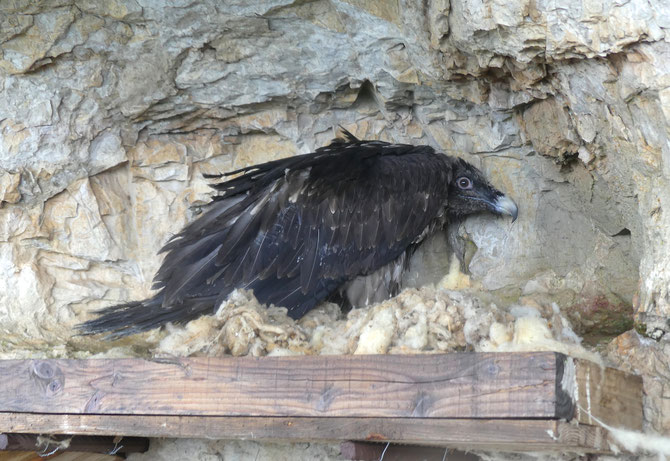

Her first long-distance journey started in April 2021: Eglazine ventured to the Netherlands, flying more than 1800km from the Grands Causses. After spending the summer wandering between the Netherlands and northeastern Germany, she returned to France in October. In 2022, she made a similar move in Spring and flew north. However, as autumn came, Eglazine stood way longer than expected and partially wintered in Germany.
Finally, in February 2023, Eglazine made her way to the Massif Central but didn’t reach the Grands Causses. During March and early April, she explored the Haut Jura region before eventually returning to the Massif Central, where she remained until the end of April. With the arrival of May, Eglazine once again took flight, this time heading northward in France.
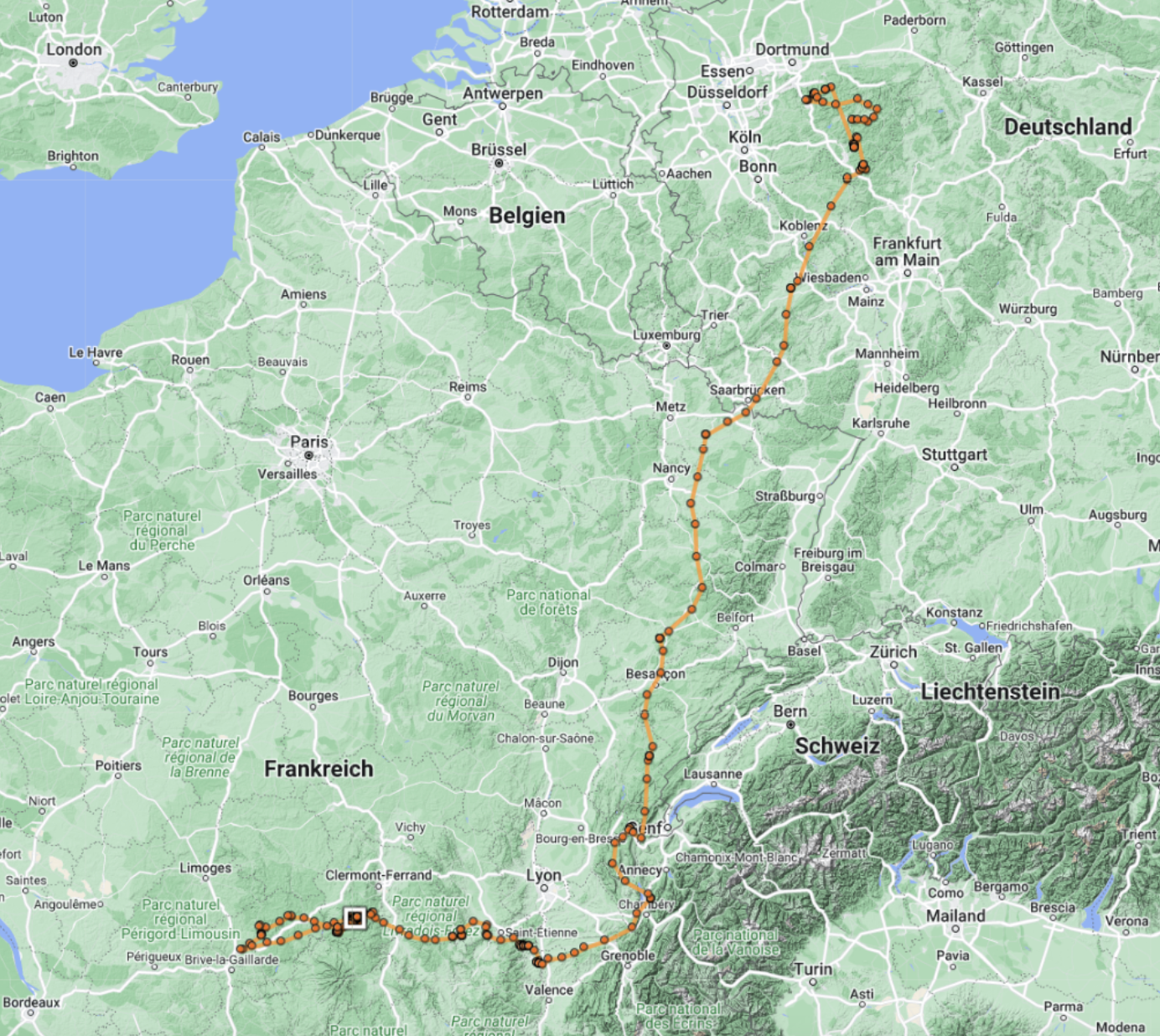

She may have embarked on her annual journey to the Netherlands, following the familiar route she had taken in the past two seasons. However, at some point during her journey, we unfortunately lost the signal from her GPS tag, leaving us uncertain about her location. The last known sightings of the bird were in Normandy (in the Orne department) at the beginning of May 2023.
